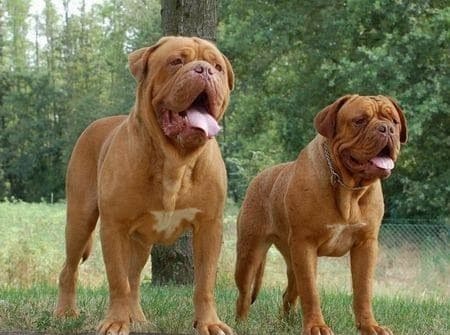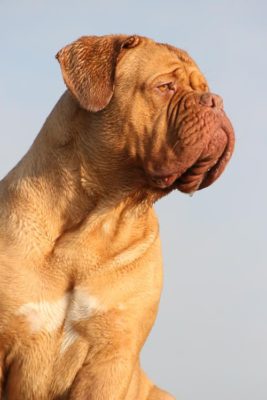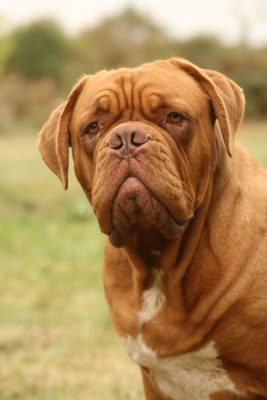Dogue de Bordeaux
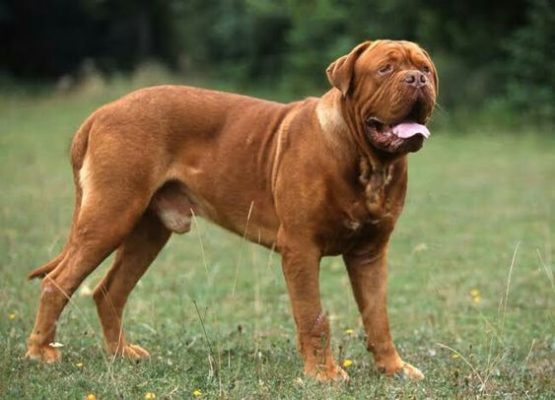
The Dogue de Bordeaux is a healthy, confident dog. Its large size makes everyone think that it is a furious and aggressive dog that can pounce at any moment. But this is not true. Dogue de Bordeauxs are balanced and calm, obey their owners, and will never bark without reason. Representatives of the breed will gladly play with children, protect the home and guard the household.
Table of Contents
Breed Information
| Another Name | Bordeaux Mastiff, French Mastiff, Bordeauxdog |
| Origin | France |
| Height | Males 60-68 cm Females 58-66 cm |
| Weight | 40-60 kg |
| Fur | Short |
| Color | All shades of reddish |
| Lifespan | 10-14 years |
| FCI Classification | Pinscher and Schnauzer – Molossoid and Swiss Mountain and Cattledogs |
| Group | Guard dogs, protection dogs |
| Price | $500-1300 |
Breed Photos
Origin History
There are many versions of the origin of the breed. Most scientists believe that the breed originated in the 14th century in France.
There are three versions about the Dogue de Bordeaux’s ancestors: some believe that their distant relatives are Tibetan mastiffs, while others believe that they are Bulldogs, and some think that they are French fighting dogs.
For a long time, dogs were not distinguished as separate breeds. But in 1863, when the first Dogue de Bordeaux won at the dog show in Paris, this breed became popular. Then all the breeders actively began to breed dogs.
During World War II, many Dogue de Bordeauxs were deliberately destroyed: they were put to sleep and killed because there was nothing to feed them in wartime. So the breed was on the verge of extinction.
But the hard work of scientists saved the breed, and later, in 1971, the Federation Cynologique International officially registered the breed. Now the Dogue de Bordeaux is a pet in many countries.
Appearance
The appearance is impressive; the size of the dog is huge, he looks severe and intimidating. The body is muscular, a little grounded, which makes the Dogue de Bordeaux look big.
The dog can weigh up to 90 kg. Bitches are about 58-66 cm, and they are slightly shorter than males, which are 60-68 cm tall.
The dog’s body has a thick layer of skin, which forms various folds. The coat is dense, short, soft, and without an undercoat.
The coloration is continuous in all shades of reddish. There may be white spots on the fingertips and chest.
Character
The Dogue de Bordeaux is a healthy, confident dog. Its large size makes everyone think that it is a furious and aggressive dog that can pounce at any moment. But this is not true. Dogue de Bordeauxs are balanced and calm, obey their owners, and will never bark without reason. Representatives of the breed will gladly play with children, protect the home and guard the household.
The dog quickly finds common ground with other animals that live in the same territory and feels obligated to protect the lesser. But with large dogs, the situation is the opposite – they will feel competition.
The Dogue de Bordeaux likes to be paid attention to and talked to because he is intelligent and sensible.
Care
The dog will feel better if he lives in a country house because it will be difficult with its large apartment size. It is not difficult to take care of its coat – you should brush it regularly and wipe it with a damp towel.
But the Dogue de Bordeaux’s face should be given more time because there are wrinkles on the muzzle, where more dirt can get. The coat should be washed thoroughly.
The Dogue de Bordeaux likes to bathe. The procedure should be done twice a month or watch as it gets dirty. In summer, you can water him with warm water from a hose without any problems. It would help if you always had a dry cloth with you because these dogs tend to drool.
Training
The socialization of the dog is vital from an early age. It should be taught to play with other dogs. Often take it in your arms, thus building trust in humans. It is better to teach at the age of three weeks; then, they are obedient and able to remember a lot of information.
From the first day in the house, you need to show your child who is the master of the house because they have manipulation skills and can easily use them with people.
Training should not last more than one hour. If the Great Dane does not want to obey commands, you should encourage him with something tasty.
Common Diseases
Like many large dogs, the Dogue de Bordeaux is prone to hip dysplasia. The breed has a hard time with temperature changes and changes in the weather. When the bitch gives birth to puppies, be sure to get help from a doctor because they have large heads.
Nutrition
Despite its large size, the Dogue de Bordeaux does not put on much weight, but it must be easy to digest. If feeding natural foods, the basis should be meat, dairy products, by-products. In winter, you can add additional vitamins and minerals to the diet.
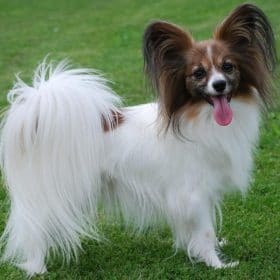 Continental Toy Spaniel
Continental Toy Spaniel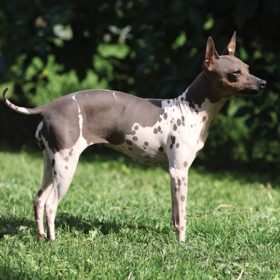 American Hairless Terrier
American Hairless Terrier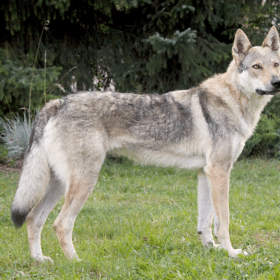 Czechoslovakian Wolfdog
Czechoslovakian Wolfdog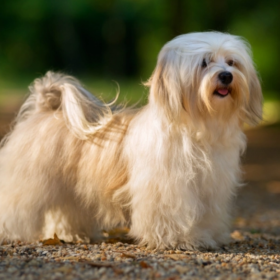 Havanese
Havanese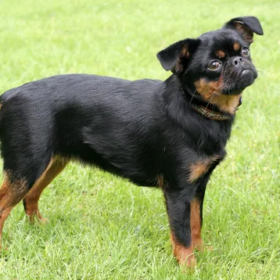 Petit Brabançon
Petit Brabançon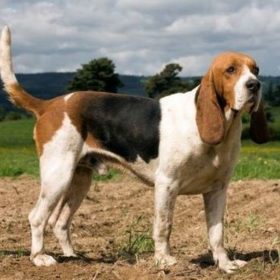 Artois Hound
Artois Hound